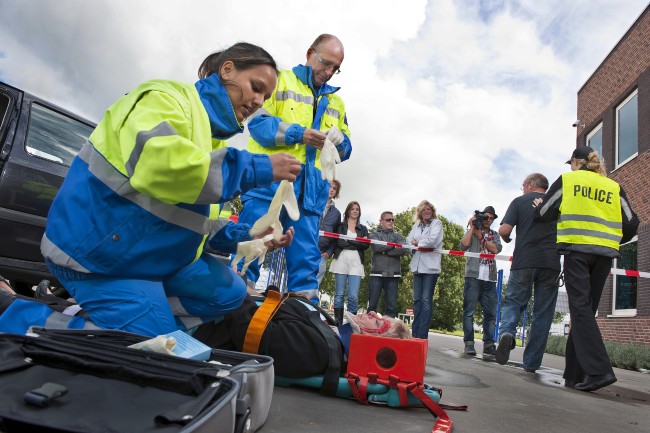
No one plans for an accident, but you expect when one occurs that you will be able to exchange information with the other driver. When a driver leaves the scene, it is a hit-and-run. It is imperative you understand what that means for your case, and what actions to take so that you can still receive compensation, even if the driver is not found right away.
Even if the driver is never found, that doesn’t mean you have to pay out of your own pocket for your injuries. Instead, you need to speak with an accident attorney in the state of Washington to explore your options. Also, while you wait for that consultation, make sure you understand your obligations and what you can do to prevent any unnecessary delays in receiving the compensation you need.
How a Hit-and-Run Accident Impacts Insurance Claims
If you have been in a serious accident involving a hit-and-run driver, then you may have extensive medical costs, lost wages, and other financial losses from that accident. You did not cause the accident; therefore, you should not have to pay for those financial losses. However, without the driver’s information or insurance, how will you get compensation to cover those financial losses and return to normal life?
Look at Your Uninsured Motorist Coverage
Do you have uninsured motorist coverage as part of your auto insurance policy? You should. However, not all states require it. Therefore, if you are lacking this coverage, you may not be able to unlock compensation right away.
If you do have uninsured motorist coverage, then this coverage was designed for hit-and-run claims (along with accidents where the driver stayed at the scene but has no insurance). Your insurance will be responsible for paying all financial losses, including rental cars, repairs or replacement to your vehicle, medical expenses, and even lost wages under that policy.
Your insurance will only pay up to the maximum of your policy. Therefore, you may be limited on the amount of compensation you receive from your own insurance company.
While they are your insurance company, realize that they are not going to offer you the compensation you deserve right away, either. They are a business, and it is the sole purpose of the claims’ adjuster to find a way to lessen your compensation. Therefore, it is still best to hire an accident attorney to assist you with your uninsured motorist claim – regardless of how many years you have been a member of that insurance company.
Steps to Take Immediately after a Hit-and-Run Accident
Now that you know you have the option of using your own insurance, as long as the coverage is there, the next step is understanding what you can do while you wait to talk to an attorney – and what you do long before you leave the accident scene yourself.
1. Stop Your Vehicle and Stay at the Scene
The other driver might have taken off, but that doesn’t mean you should. Instead, stay at the scene of the accident and contact the police immediately. If anyone is seriously injured, contact 911. It is imperative that you report the hit-and-run to the police. You need a police report to show insurance that you stayed at the scene of the hit-and-run incident in order to use your uninsured motorist coverage. Likewise, you need that police report in case you do find the driver and wish to file a suit against them.
You should never leave the scene of an accident without permission from law enforcement – doing so is a crime.
2. Take Pictures of the Scene
If you can, take pictures of your vehicle, any obvious injuries, and the scene itself. Document any debris left on the road, paint transfer on your car (which helps indicate what color the other vehicle was that hit you), and the road conditions at the time. These pictures will help tremendously if you go to trial later.
3. Find Witnesses at the Scene
If you can, find witnesses at the scene – especially anyone that saw the other vehicle and may remember details about it. Get their contact information as well, just in case your attorney needs to follow up with them after. Write down any information they remember about the vehicle. You may be surprised at how many people catch the license plate (or partial) without knowing it.
4. Get Medical Attention, Right Away
Next, you need to seek medical attention, right away – even if you feel okay at the moment. Accidents are incredibly stressful on the body, and your body’s natural flight-or-fight response will release chemicals that can hide the signs of a serious injury. Furthermore, you need to start medical records that show the initial injuries after the accident – in case insurance companies want to claim you were injured outside of the accident.
Make sure you tell the treating physician you were involved in a vehicle accident. Then, do all follow-up care, treatments, and make all appointments as requested. While you may not have a defendant in your case, there may come a time you do, and you want all of the medical evidence you need to get compensation from that driver.
Contact a Local Accident Attorney with Experience Handling Hit-and-Run Cases
If you or a loved one was seriously injured in a car accident, and the driver has fled the scene, make sure you follow these four critical steps above. Once you are home and recovering, contact an accident attorney from Brett McCandlis Brown & Conner, PLLC. Our attorneys have helped countless victims of hit-and-run cases get compensation from their insurance or the other driver (when found). Do not think that because the driver left, you are without options.
Our team will serve as your advocate against any insurance company – including your own – to make sure you get the compensation you deserve.
Call our office today to schedule a free accident case evaluation or contact us online with your questions.


